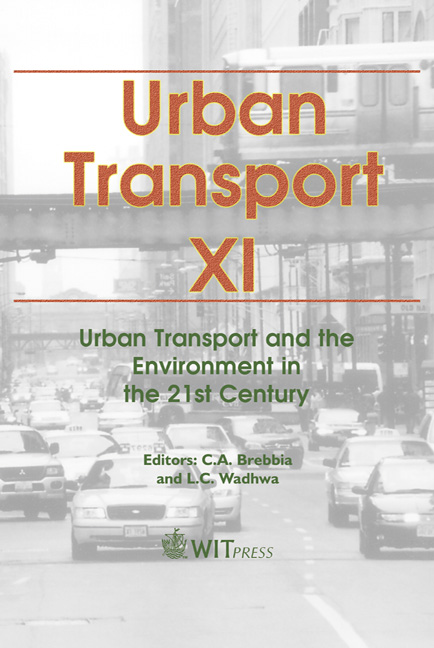Study On Activity-based Time Choice Model
Price
Free (open access)
Transaction
Volume
77
Pages
10
Published
2005
Size
505 kb
Paper DOI
10.2495/UT050641
Copyright
WIT Press
Author(s)
J. Zhicai, Z. Fang & L. Zhiyao
Abstract
In this paper, the framework of an activity-based travel demand forecasting model is presented. By analysing the factors which affect the residents’ travel time decisions, two time choice models which can predict the start and end times of a trip respectively are developed. The models are estimated and the sensitivity of the model is analysed from the 2003 Household Travel Survey in Changchun. With the designed models, we predict how people adjust their start time when the travel cost by auto has been added. Finally the weaknesses of the current system are summarized, and the way to improve the approach of the time forecast is put forward. Keywords: travel demand, trip, tour, disaggregate model, alternative, intermediate stop, forecast, choice, utility, choice set. 1 Introduction In order to alleviate the serious traffic congestion in urban areas, in recent years, researchers have paid more and more attention to Travel Demand Management (TDM). Since 1970’s, many policies, such as increased peak-hour commuter tolls in the CBD area, flexible work hours, reduced transit fares for off-peak transit users, have been put forward by Europe, US, Japan and other countries. We can learn that many policies are adapted to decrease traffic pressure during morning and evening peak time by decentralizing travel demand on time. But its premise is to master the law of the residents’ travel time, forecast the characteristics of the travel time distribution, and provide basis for the establishment and implement of TDM. Thus, in order to avoid misadvising the residents’ travel, it is necessary for planners to predict the time demand effectively.
Keywords
travel demand, trip, tour, disaggregate model, alternative, intermediate stop, forecast, choice, utility, choice set.





